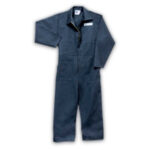The familiar pixelated pattern of the Army Combat Uniform (ACU), also known as the Universal Camouflage Pattern or digital camouflage, officially became a relic of the past for the U.S. Army on October 1, 2019. After years of service, the Acu Combat Uniform has been fully phased out, making way for its successor, the Operational Camouflage Pattern (OCP), also referred to as the “Scorpion” pattern. This transition marks a significant shift in military attire, driven by the need for enhanced camouflage effectiveness and improved soldier performance in diverse operational environments.
 U.S. Army Reserve officer in ACU presents arms during deployment ceremony, highlighting the now-retired uniform pattern
U.S. Army Reserve officer in ACU presents arms during deployment ceremony, highlighting the now-retired uniform pattern
The decision to retire the ACU combat uniform was not sudden. In fact, the process of phasing out this pattern began in 2014 as the shortcomings of the Universal Camouflage Pattern became increasingly apparent. Soldier feedback and operational experience indicated that the OCP offered a considerable upgrade in functionality and camouflage capability. Command Sgt. Maj. Dennis Law of the U.S. Army Reserve 412th Theater Engineer Command emphasized the improvements brought by the OCP, stating, “With the OCP, we’ve been able to improve upon the functionality of the ACU and carry that forward into a uniform that has already gained more functionality and more popularity than the ACU ever had.” This sentiment reflects a widespread consensus within the Army that the OCP is a more effective and well-received uniform.
The primary advantage of the Operational Camouflage Pattern lies in its superior ability to blend into a wider range of environments compared to the ACU. The digital camouflage of the ACU, while intended to be universal, proved less effective in many natural terrains. The OCP, with its “Scorpion” pattern, adopts a more organic approach, utilizing colors and shapes that are commonly found in nature. This shift towards a more naturalistic camouflage design allows soldiers to be better concealed in operational theaters ranging from the forests of Korea to the varied landscapes of South America, as highlighted by Command Sgt. Maj. Law. The improved camouflage not only enhances soldier safety but also contributes to mission effectiveness by reducing visibility to adversaries.
 U.S. Army Reserve soldiers in ACU pattern uniform operate M240B machine gun during training, showcasing the now-obsolete digital camouflage
U.S. Army Reserve soldiers in ACU pattern uniform operate M240B machine gun during training, showcasing the now-obsolete digital camouflage
The move to replace the ACU combat uniform was also influenced by concerns raised in Congress. Recognizing the need for more effective camouflage, particularly in Afghanistan, Congress passed House Resolution 2346 in 2009. This resolution directed the Department of Defense to expedite the provision of combat uniforms with camouflage patterns suitable for the Afghan environment. In response to this directive and ongoing evaluations, the Army conducted extensive trials, including computer simulations and field tests across diverse global locations. These rigorous assessments ultimately led to the selection of the “Scorpion” pattern as the most effective solution.
Beyond camouflage effectiveness, the transition to OCP also addresses the issue of uniformity within the force. As the Army phases out the ACU pattern, the adoption of OCP ensures a standardized appearance across units. First Sgt. Kimberly Jones of the Command’s Headquarters and Headquarters Company noted the importance of uniformity and the perceived durability of the OCP uniform material. “The material is heavier, so it lasts longer before it starts to fade,” she observed, suggesting that the OCP uniform is not only more effective but also potentially more cost-effective in the long run due to its increased lifespan.
Looking ahead, the Army continues to innovate in soldier uniform technology. In addition to the OCP, the Army has introduced the Improved Hot Weather Combat Uniform (IHWCU), designed for enhanced comfort in hot climates, utilizing the OCP color scheme. Furthermore, the Army is exploring future uniform advancements, including materials that offer concealment from ground-based radar and fabrics with specialized coatings for thermal regulation. These ongoing developments demonstrate the Army’s commitment to providing soldiers with the most advanced and effective combat uniforms, ensuring both protection and optimal performance in diverse operational environments. The retirement of the ACU combat uniform and the full adoption of the OCP marks a significant step forward in this continuous evolution.

